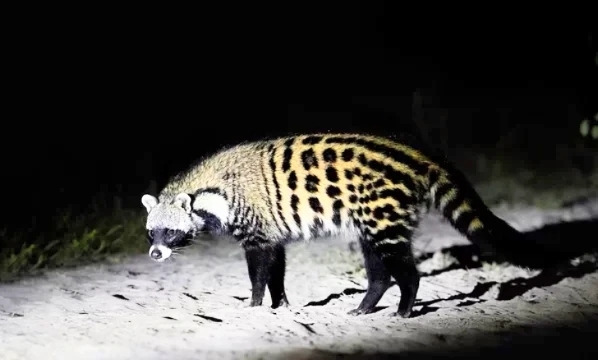|
| Query: Mammal | Result: 1251st of 3455 | |
African civet (Civettictis civetta)
| Subject: | African civet (Civettictis civetta)
| | Poster: | Axis (ground_assault_11@yahoo.com)
| |

| Resolution: 598x360
File Size: 90501 Bytes
Date: 2022:12:10 09:07:31
Upload Date: 2022:12:10 10:08:22
|
A black and white nocturnal mammal that belongs to the same family as a mongoose. It is an omnivore which is the same shape and size as a raccoon, it specializes in eating millipedes despite the cyanide which they contain. Their habitat preference is for forest and dense woodland where the vegetation is thicker. |
^o^
Animal Pictures Archive for smart phones
^o^
|
|

